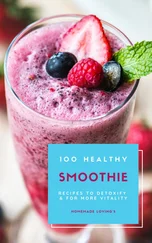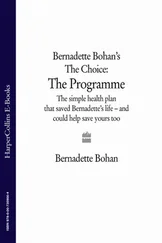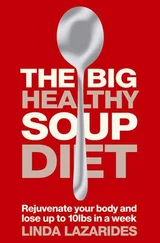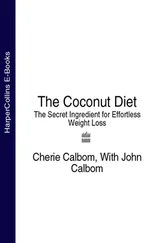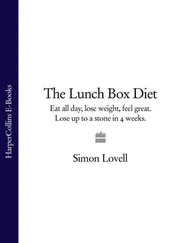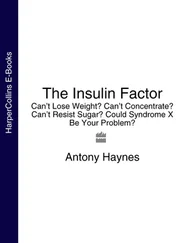Result: Smaller fat cells. Smaller trousers.
DIGGING A BIT DEEPER . . .
In our quest for external loveliness, we need to ensure internal harmony. Which means taking care of our gut. The gut basically goes from the bottom of the stomach to the anus and has two segments, the small intestine and the large intestine. This part of our bodies is not just responsible for breaking down our food into manageable particles and then expelling the waste (with some gurgling noises and nasty smells). No, the gut has been hailed as our ‘second brain’ and it seems that, through the billions of good healthy bacteria, the part it plays in the balance and stability of our emotions – and the impact it has on our personalities – is huge. It is not merely a place for digestion.
Essentially, a happy gut is central to our wellbeing.
If we are going to commit to eating food that will help us lose weight, then it is important our gut responds well to that food. If, every day we experience bloating, gas and gurgling plus a host of other unexplained symptoms (such as fungal issues, abdominal pain, lethargy) then our fat-loss progress will be hindered. This will also affect our mood and emotions. We are aiming for a digestive system that is calm and stable. And our mood will follow suit. If some foods create adverse reactions in the body, then we’re looking at turbulent and rocky.
Before we get stuck into the 21 Day Blast plan rules, foods and workouts, let’s just take a look at those foods that can jeopardise our gut harmony and therefore inhibit our fat loss.
I doubt any of them will be a surprise to you. They appear on our daily menus, dragging their stigmas and bad reputations behind them, and for good reason.

Chapter 3
THREATS TO GUT HARMONY
. . . and therefore to successful fat loss
Throughout the 21 Day Blast plan, the food you will be eating will help you lose fat, feel energised and be ready for anything. Your sweet cravings will diminish and your mood will stabilise. Your skin will glow, your sleep will be deep and your energy levels will rocket. However, there are some areas of food that do the opposite to all that. Take them away and – after an initial feeling of deprivation – you will then notice a whopping difference to your wellbeing and your mood.
I’m going to take you through those foods now. I promise you this isn’t dull. I might even go as far as to say some of it is riveting.
SUGAR
Sugar is a simple form of carbohydrate and can be found in many foods: fruit juices, dressings, marinades, anything marked low-fat, fizzy drinks, sweets, biscuits, breakfast cereals, alcohol . . . the list goes on and on. It is broken down into glucose in the bloodstream. Too much of it, as we’ve seen, will be cemented in place as body fat.
Sugar is a drug and it needs a management programme. Cue the 21 Day Blast plan.
Research studies show that regular consumption of sugary products contributes to heart disease, rheumatoid arthritis and Alzheimer’s; it increases the risk of diabetes, ruins our skin, makes us edgy and sends our hormones into overdrive. So in the wake of persistent bouts of biscuit-eating pleasure, there lies a serious and disastrous state of affairs.
Robert Lustig in his book Fat Chance: The Hidden Truth About Sugar, Obesity and Disease states that the damage done by 150-calories’ worth of sugary fizzy drink far outweighs the damage done by 150 calories’ worth of other food. Food for fat loss is not always about calories. It’s about what those calories are made up of.
To help us understand more, look at it this way. Sugar comes in various forms, one of them is fructose. This is the sugar contained in fruit. When this is concentrated, it will raise glucose levels far beyond what we need.
More disturbing is that fructose is used in the making of sweeteners like agave syrup and maple syrup. These sweeteners, which you thought were natural, so unrefined, so back-to-nature, are added to food items to make them tempting, and seemingly healthy. Take some granolas for example. That very word smacks of crunchy, wholesome country kitchen, doesn’t it?
There’s a point to all this. Keep reading.
Around the 1970s the word on the street was that fat made you fat. This in turn led to a demand for products labelled low-fat. Following high tariffs on foreign sugar, a product called high fructose corn syrup (HFCS) was developed in the US. It was cheap, easy to make and it was used to replace the fat in many foods, ensuring food kept its taste and appeal to the public. The bonus was that it lengthened its shelf life.
Hence the birth of ‘low-fat’ products, and anything labelled as such became a fast seller: flavoured yoghurt, cereals, low-fat biscuits, cakes, sweets, breads, salad dressings, frozen convenience foods, fizzy drinks.
It was the addition of HFCS that made them edible and addictive. With their new low-fat status, these foods flew off the shelves; the public were jubilant and couldn’t get enough. The more they ate, the more they wanted to eat. And so the gentle (and now stratospheric) rise in human obesity levels began.
This means that it is easy for our taste buds to become wired to enjoy sweetness. We become used to it. We long for it. We can’t stop thinking about it. Eventually we give in.
‘Oh, you’re all good news and merry cheer, aren’t you? Does that mean I can never have anything sugary or processed ever again? Ever?’
God no. It just means finding balance. Occasional ‘Oh sod it’ moments are inevitable in life. Moments when you crack open a bottle of Merlot, chuck a supermarket pizza in the oven and throw caution to the wind . . . they’re wonderful! On Blast we are going to learn how not to allow sugar to run our lives and govern our food choices. We are going to train our taste buds to love real food, cook real food (no gourmet chef-ness required) and leave our sweet tooth dribbling by the wayside. So in the long run, that pizza may not become so regular . . . or so enticing.
ON BLAST: The only sugar you will have is sugar that naturally appears in carbohydrate-rich foods such as oats, potatoes and some fruits. As an example there is 0.8g of sugar in 100g of potato. And there is 6.4g sugar in a Jaffa cake biscuit. (One whole teaspoon of sugar is 5g.)
Just thought I’d put that out there.
On to something else . . .
‘Day 4: I know it’s early days but I am starting to feel so much better. I keep going to tap my tummy and it’s shrinking! Can’t say I haven’t thought about a bar of chocolate but I’m not craving it like my life depended on it and I feel at ease with my life, calm and present. Very weird, but good weird.’
B.S., London
WHEAT
Wheat has long been known as an irritant to the digestive system and it has become very fashionable to give it up. Masses of research has been done and very little of it conclusive. But it does appear that avoiding wheat products can make us feel better. Is this because so many wheat-based products are manufactured with additives and chemicals in order to prolong their shelf life? This would mean the body finds it difficult to process these chemicals, putting a strain on the liver. This results in toxins being stored in fat cells. Or is it due to the gluten present in wheat?
Gluten is a protein present not only in wheat but also in rye, barley and in a small amount in oats. If you have a full-blown allergy to gluten (and here I mean constant stomach pains, diarrhoea, gas, vomiting) then you may be a sufferer of coeliac disease. This is when the gut and the intestinal wall become damaged and inflamed. It is a serious condition and if you think it applies to you, then get yourself to a doctor pretty pronto, as it must be treated by medical professionals.
Читать дальше


